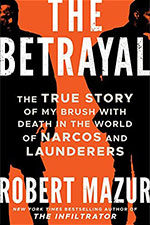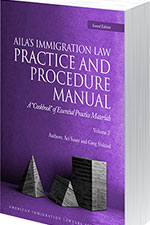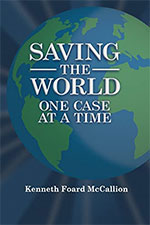 VERDICT: It’s a Keeper
VERDICT: It’s a Keeper
The Betrayal: The True Story of My Brush with Death in the World of Narcos and Launderers
By Robert Mazur (New York, NY: Little A, 2022). 295 pgs. $14.95. Order, www.amazon.com.
Reviewed by Laurel Montag
Have you ever wondered how undercover drug busts work? Robert Mazur’s The Betrayal takes readers to the center of a long-term drug-bust operation in Central America. The Betrayal is a first-person account from Mazur, a decorated undercover Drug Enforcement Administration (DEA) agent. Mazur tells a whirlwind story of what it is like to burrow deep undercover with some of the most dangerous individuals on the planet. Intertwined with his explanation of death-defying interactions with kingpins of various drug cartels, Mazur also offers insight into the complicated inner conflict between carrying out his DEA duties and building genuine trust and relationships with people in cartels.
Mazur, a seasoned undercover agent and author, creates a heavily detailed picture of the delicate process of running an undercover narcotics investigation. The book describes the great risk involved in these operations, not only to undercover agents but to their loved ones as well. Furthermore, Mazur uncovers entrenched corruption in foreign governments, which allowed systematic drug crimes to persist for decades. For example, Mazur explains that some governmental employees and officials were regularly bribed for nominal amounts of U.S. dollars, which allowed cartel members to escape detainment and drug trafficking to continue across borders.
The majority of the book recounts numerous communications between Mazur (using his undercover alias: Robert Baldasare) and his cartel contacts. At times, the book reads much like a transcript and somewhat lacks in storytelling. Although I enjoyed getting sucked into Mazur-Baldasare’s conversations with cartel members, fellow undercover agents, and governmental officials, the story would have benefitted from deeper discussion of the personal motivations, backstories, and so on of the “characters.” Keeping track of the many players throughout the book is also challenging, but Mazur provides a helpful glossary of names for readers. Overall, The Betrayal is an immersive read, especially for those who, like me, find undercover operations fascinating.
Laurel Montag, Marquette 2022, practices at Dewitt LLP in Brookfield and focuses on business and intellectual property law.
 VERDICT: Touchdown!
VERDICT: Touchdown!
AILA’s Immigration Law Practice and Procedure Manual: A ‘Cookbook’ of Essential Practice Materials, Second Edition
By Ari Sauer & Greg Siskind (Washington, DC: American Immigration Lawyers Association, 2021, 2022). Two-volume set. $569. Order, www.aila.org.
Reviewed by Thomas G. Reynolds
In his preface, Greg Siskind, an author of AILA’s Immigration Practice and Procedure Manual, refers to the Manual as a “cookbook” – a book that provides both new and experienced attorneys with all the “ingredients” and step-by-step instructions needed to prepare a successful immigration case. He and coauthor Ari Sauer achieve their lofty goal in this excellent and exhaustive guide.
The two-volume Manual contains 19 chapters, which cover topics including the Deferred Action for Childhood Arrivals (DACA) program, temporary protected status, visa and immigration processes, and naturalization and citizenship. Each chapter begins with an extensive overview that provides a history of the specific program, noting pertinent statutes, regulations, court decisions, and executive branch documents. It then sets forth detailed requirements for participation in the program.
Next, each chapter shows a sample workflow giving a detailed listing of the required steps for the outlined process. This includes eligibility-screening-assessment tools, sample intake questionnaires, and sample checklists of necessary steps and documents. The authors give specific instructions and tips for completing the required forms for the outlined processes.
Want to Review a Book?
Please request a book and writing guidelines from the Wisconsin Lawyer managing editor at wislawmag@wisbar.org. Reviewers may keep the book reviewed. Reviews of about 500 words are due within 45 days of receiving the book. Reviews are published, space permitting, in the order received and may be edited for length and clarity.
Also included are a sample packet-preparation-and-review checklist, sample cover letters, correspondence, and case-management suggestions. The book even contains examples of decision-processing checklists used by the United States Citizenship and Immigration Services.
All the guidance in the Manual is very well structured and detailed, providing a “soup to nuts” guide to successfully completing each of the outlined processes.
Chapter 7, for example, considers the O-1 visa process, for foreign nationals who have “extraordinary ability in the sciences, arts, education, business, or athletics, which has been demonstrated by sustained national or international acclaim or who [have] a demonstrated record of extraordinary achievement in the motion picture or television industry.” The authors’ brief overview of the O-1 process provides a concise history of the visa (including footnotes to applicable sections of chapter 8 of the Code of Federal Regulations). The authors then outline the filing requirements, necessary documentation for furnishing evidence of extraordinary ability or achievement, and other petition requirements. They show a sample workflow addressing the necessary steps to complete the O-1 application process. Among the provided documents are client-intake questionnaires for employees and employers, document checklists, detailed job descriptions, sample support letters, packet-preparation-and-review checklists, tips for completing the required forms, sample cover letters, and instructions to clients for attending an application appointment.
Sauer and Siskind display an impressive command of immigration law and practice throughout this monumental, engaging, and detailed work. They have provided an outstanding reference for both experienced immigration lawyers and general practitioners who occasionally need to support their clients with immigration issues. I highly recommend this book to anyone wishing to navigate successfully the complexities of immigration law and practice.
Thomas G. Reynolds, Michigan 1988, practices with the U.S. Department of the Interior in Albuquerque, New Mexico. Tboneabg70@gmail.com
 VERDICT: It’s a Keeper
VERDICT: It’s a Keeper
Saving the World One Case at a Time
By Kenneth Foard McCallion (HHI Media/Bryant Park Press, 2022). 409 pgs. $39.25. Order, www.amazon.com.
Reviewed by Melissa Emerson
This book is a collection of riveting chapters chronicling some of the most interesting cases that the author, Kenneth Foard McCallion, undertook during his lengthy legal career. McCallion begins by stating that even though “the platonic ideal of equal access to justice seems like an ever-receding mirage,” plaintiffs’ attorneys and trial lawyers can make a considerable difference in leveling the scales of justice. Following a defense of the contingent-fee system, stating that it has been unfairly attacked for political purposes, McCallion points out that “the American legal system’s ability to give ordinary people access to justice and protect our Constitutional rights and fundamental democratic principles is especially important now.”
Each chapter focuses on significant landmark cases that McCallion, a seasoned civil litigator, worked on, beginning with stories from his time as a prosecutor, when he worked cases related to organized crime, drug enforcement, Medicaid fraud, racketeering, and counterintelligence; and ending with his private-practice career, when he focused on cases involving international human rights, environmental law, and complex litigation.
McCallion was involved in many high-profile cases, including ones involving organized crime, the Bhopal (India) gas disaster, the Exxon Valdez oil spill, the 9/11 terrorist attacks, Agent Orange lawsuits, and Holocaust reparations claims. He also mentions experiences, such as attending a Yale class reunion at the White House around the time that the United States invaded Iraq; and discusses dangers that he encountered, particularly early in his career as a prosecutor. For example, an organized-crime family put a “hit” on McCallion, and he faced serious security threats from the cartels when he was working on drug enforcement cases.
This book is a relatively quick read, despite its length (392 pages). McCallion is skilled at telling complex stories in an uncomplicated manner. He presents readers with a baseline understanding of the complex issues and then goes through the stages of litigation, discussing along the way interesting issues related to trial strategy, discovery, and various aspects of civil procedure. This style of writing makes this book accessible to both lawyers and nonlawyers.
Evident throughout the book is that McCallion has an unwavering commitment to access to justice, fairness, and holding wrongdoers accountable. This is apparent in each chapter as he discusses how he became involved in specific cases, focusing on the people involved in the litigation, including plaintiffs, attorneys, judges, and others.
The book is not politically neutral. The author states his opinions periodically throughout the book. In our highly polarized society, this was a daring editorial choice, but I think it offers context on McCallion’s world view and helps explain his career trajectory.
Melissa Emerson, William Mitchell 2006, is a senior lecturer of business law at UW-Eau Claire. She also runs a solo practice, Emerson Law LLC, where she focuses in estate planning.
» Cite this article: 96 Wis. Law. 50-52 (February 2023).
